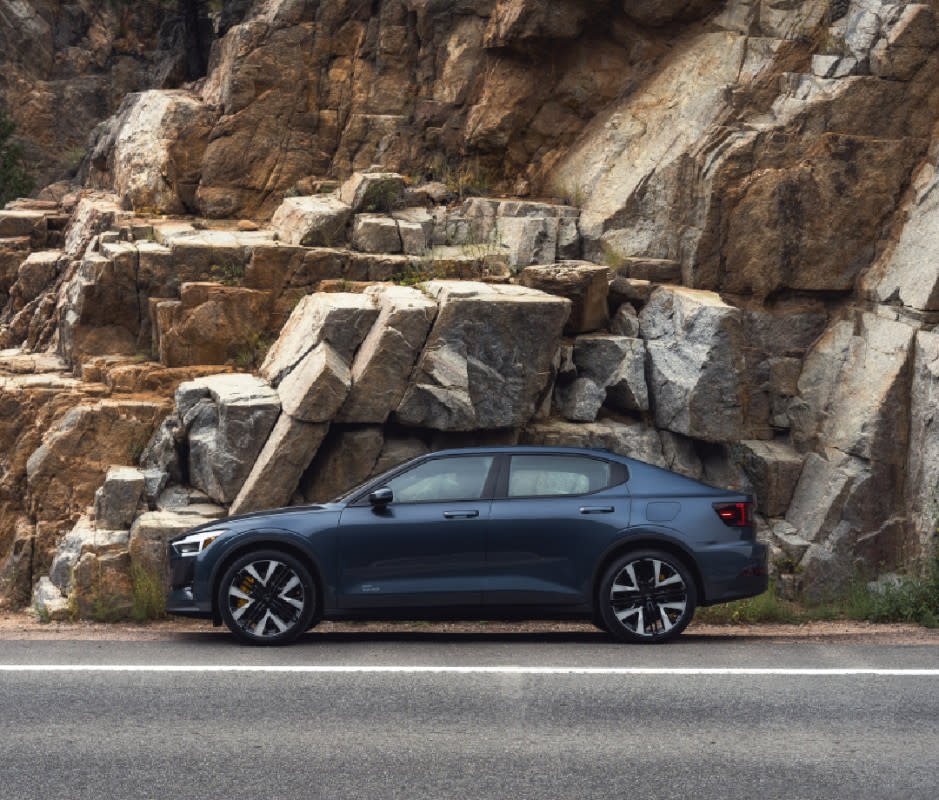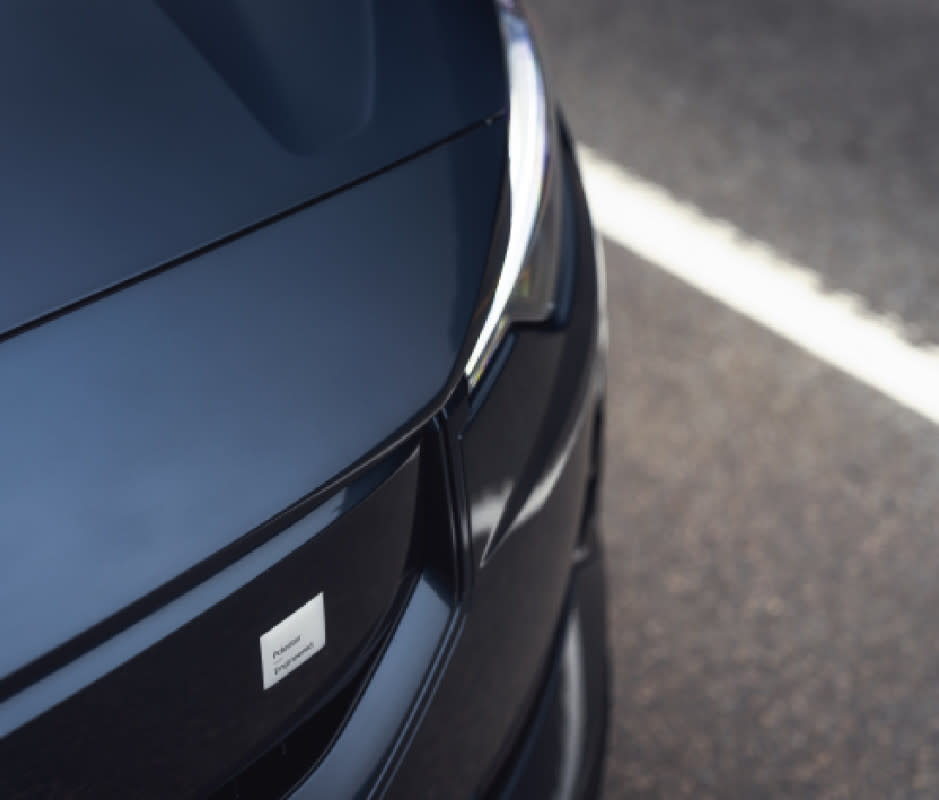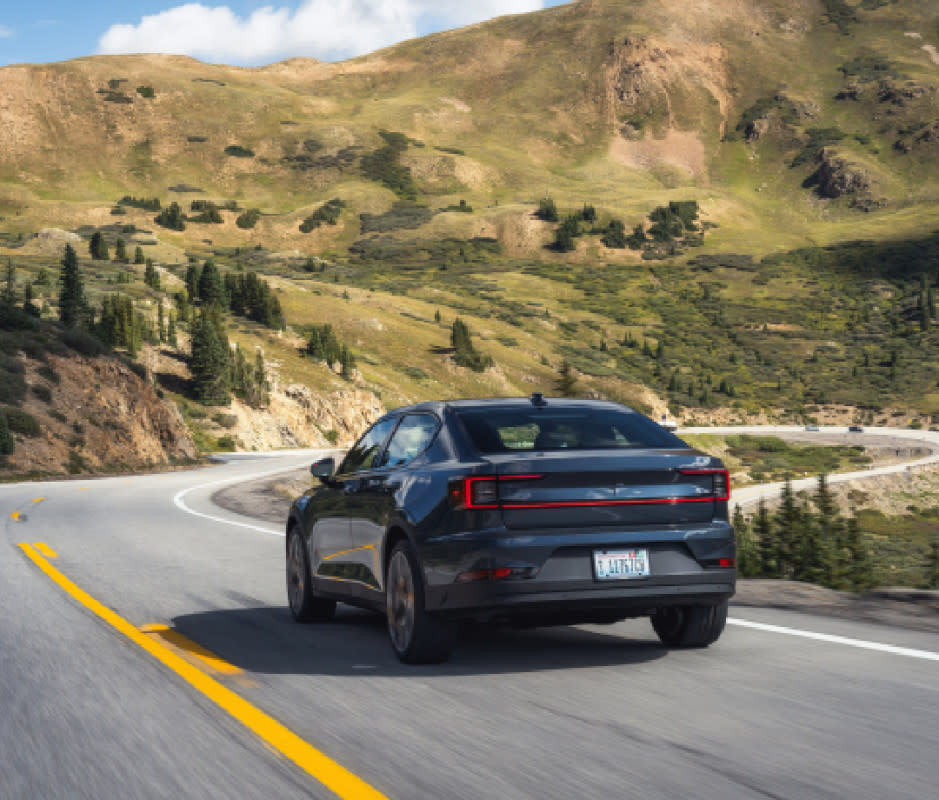The 2024 Polestar 2 Switches to RWD With More Range and Power, but Will It Drift?
Out of all the electric vehicles on the market today, I probably recommend Polestar 2 most often to friends and family. The Volvo spin-off within Geely’s international conglomerate delivers crisp design, impressive build quality, and an avant-garde ethos—all of which tend to attract people looking for a Tesla alternative.
But in the back of my mind, I always remember that the entry-level Polestar 2 in Long Range Single Motor trim comes in front-wheel drive, as opposed to the base Model 3’s rear-mounted motor. Mounting the motor up front produces a more efficient powertrain and falls more in line with Volvo’s last few decades of automobiles, but for an EV, the layout also produces unfortunate amounts of torque steer while driving in town and even throttle liftoff oversteer at higher speeds (almost akin to a rear-engine Porsche 911).
Now for model year 2024, Polestar 2 gets an impressive list of critical updates: The Long Range Single Motor switches to rear-wheel drive to enhance driving dynamics, while the whole lineup receives upgraded motors, batteries, and inverters. The result is more power, more range, improved handling, and faster charging. Everything getting better all at once might sound like snake oil, but is really a sign of progress in the EV market. To provide an inkling of how much the revisions truly improve the 2, Polestar invited select media out for a day in the Rocky Mountains of Colorado with the 2024 model year’s bottom and top trims.

Courtesy Image
Scandinavian Roots in the Colorado Rockies
First, Polestar reps dropped me into a Long Range Dual Motor 2 equipped with the top Performance Pack that adds a few extra horsepower, Öhlins dampers, and 20-inch forged alloy wheels wearing 245mm-wide Continental SportContact 6 tires at all four corners. Now putting out 455 horsepower and 546 lb-ft of torque, the combination of additional output with larger wheels and stickier tires does drop the EPA’s official range estimate to only 247 miles.
But rest assured, if that level of grunt sounds good for an internal-combustion car, the instantaneous response from an EV means far more jerk (the scientific term for the rate of change of acceleration) with each mash of the go pedal. A grin on my face, I ripped around trying to elicit any oversteer or understeer out of the AWD system on asphalt, hammering the brakes and yanking hard on the steering wheel.
But Polestar’s impressive chassis tuning, which the Öhlins help to further refine, combines with the somewhat conservative electronic stability control to rein in such exuberances. If anything, the grippier tires and all-wheel drive almost make some of the electronics feel overly programmed, especially the adjustable steering weight, which, for only the second time ever in a press loaner, I preferred when turned down from the firmest setting.
Related: Ice Drifting Polestar’s Electric Concept Car
Most skateboard-chassis EVs can raft a bit on wavy roads and the Polestar 2 exhibits hints of such behavior even when equipped with sublime shock dampers, but the 4,641-pound curb weight also means the tires will start to protest relatively early into any hard corners or long sweepers. The ECU responds accordingly, dialing back torque to prevent any hints of slippage.
That is, until I found a little section of gravel road without too many sharp rocks to potentially puncture those road-focused Continentals. All of a sudden, in Sport mode, I easily flicked through a right-left transition without too much computer intervention—maybe Polestar’s Scandinavian roots shining through, but the rally form reminded me a bit of my experience with Polestar’s one-off Arctic Circle concept last winter on the ice track at Mecaglisse, north of Montreal, Canada.

Courtesy Image
Into the Updated Entry-Level Polestar 2
We swapped cars at a lunch stop in Estes Park and even just pulling out of the parking lot, the Long Range Single Motor’s reduced power immediately required a more generous application of throttle (if we can even call it that) to get up to speed. But the first corner then revealed exactly what Polestar hoped to achieve by switching to the rear-wheel-drive layout, namely a lighter nose and happier tail putting down the lower-spec car’s 299 horsepower and 361 lb-ft of torque.
Again, those numbers mean something different in an EV than an ICE car. But the LRSM also weighs a full 218 pounds less than the AWD Polestar 2, with a slightly rear-biased 48:52 weight distribution. And fiddling with the car’s various settings, I now preferred the heaviest steering (providing the least assist).
What was that first-ever press car where I previously wanted lighter steering, you ask? Well, that dubious honor goes to the current front-wheel-drive Polestar 2 in Long Range Single Motor trim, which produced an entirely disconcerting level of torque steer feeding back into the steering wheel simply because the front wheels can’t handle so much juice.
Now throw in powerful enough regenerative braking on front axle, without anything slowing down the 2’s hind legs, and the system almost prompts throttle liftoff oversteer while coming off the gas on long sweepers at highway speeds. No wonder Polestar decided to switch up the mindset.
Head of Polestar USA Gregor Hembrough once mentioned the company’s “Pure Play” ethos almost in passing during an interview, an investing pun that perfectly dictates the change to a more lively rear-wheel-drive layout. With less heft on the front tires and instantaneous torque delivered out back, the base 2 now nails that more playful level of performance on winding roads—all despite wearing Michelin Primacy 4 eco-tires on 19-inch wheels (and lacking the Öhlins dampers).
Related: 50 Best Whiskeys in the World 2023
Still, even pushing hard through bends that an EV this heavy shouldn’t be able to race around so quickly, I struggled to induce much tire squeal or squirm. Those rears just wouldn’t break loose. I began to suspect that just as on the AWD car, Polestar programmed the RWD version to stay relatively tame as a way to manage the weight that battery packs necessarily incorporate. But then I realized that while stopping and starting to shoot photos and switch duties with my drive partner, I had not turned the ESC specifically over to Sport mode yet. A few taps on the screen and voila, time to find some corners!
And boy, did I. I mashed my right foot hard to gain some speed coming into a sharp right-hander, set the outside tires on edge, then lifted off to prompt a bit of regen that shifted weight towards the front. Another sharp jab and the rear wheels stepped out, then an easy moment of countersteer lead to a nice, controlled drift. For about 1.5 seconds anyway, before the ESC kicked in and shut down the flow of electrons to that rear motor.
All of a sudden, all four tires found full grip again with my foot still matted, the 2 leapt forward and snapped left, jumping back against the steering angle as I whipped the wheel over trying to keep up. More opposite lock only goes so far, though, and the moment quickly arrived to wisely slam on the brake pedal with both feet before we ended up fully sideways on public roads.
Deep exhale. Play at your own risk would be my warning. This little full-sketch episode came about entirely of my own fault, I can admit sheepishly, after expecting nothing to happen as during previous attempts at shenanigans with the AWD 2 and ESC activated.
But the big difference versus gas cars, with no need to wind up into the power band to prompt wheel slip, gave me a quick lesson on EV drifting. A bit more practice or experience and maybe the ESC might not cut out so quickly. In an empty parking lot for a more controlled experiment, perhaps.

Courtesy Image
An Even More Attractive Tesla Alternative
Still, the fact that Polestar allows for any tail-happy fun in Sport mode reveals the main reason to switch the 2 to a rear-drive layout. But the other model-year changes also seem legit, as we used about 100 miles of estimated range to drive 90 miles in the mountains on a 95-degree day with a panoramic sunroof roasting the cabin and the AC blasting at all times.
Not bad, and the LRSM’s new EPA-official range of 320 miles will mark a massive step up from from the current model year’s 260 miles—making the Polestar 2 an even better option for anyone hoping to escape Elon Musk’s increasingly insane orbit. Not to mention amid an expanding EV market with competition from Kia, Hyundai, BMW, and Volkswagen at similar price points.
The 2024 Polestar 2 starts at $49,900 for a Long Range Single Motor with no options, or $55,300 for the AWD Long Range Dual Motor. Both qualify for a $7,500 federal rebate. I wish Polestar allowed the base LRSM to leave the factory with the Performance Pack, mostly to add those Öhlins dampers that smooth out road imperfections noticeably while also managing body roll and skateboard rafting effects slightly better.
Related: The Best Side-by-Side UTVs of 2023
Or, on the other hand, if the AWD car received the new 82-kWh battery to at least get a bit closer to the RWD’s range—Polestar reps claimed that supply chain concerns prevented that switch. Talk about a hard choice, if someone forced me to pick between the two. Though I enjoyed the AWD’s dynamic in gravel, would I ever actually road trip to a ski resort in an EV? Low temps aren’t great for batteries and given the distance to Mammoth Mountain, the additional range of the LRSM would make counting down miles between chargers a lot less stressful.
For real-world range and driving dynamics 99 percent of the time, the newly rear-drive LRSM currently takes the cake. Maybe an AWD with the big battery is coming, or the Öhlins will become an option on the RWD. In the meantime, after a series of baby steps since 2017, Polestar next year will take one giant leap forward in the process of differentiating from Volvo.
[From $49,900; polestar.com]


